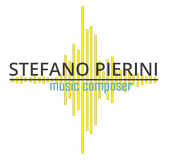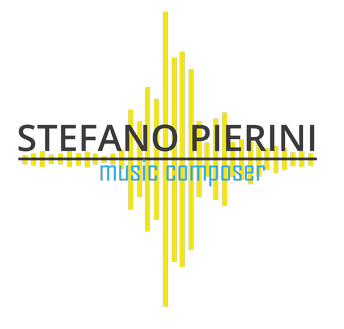
PRELUDI for basset horn and string orchestra
‘[…] the pieces are often short, even miniatures, but it’s as if that smallness of scale makes you aware of some gigantic vacuum around them.’
(Tom Service, A guide to György Ligeti’s music)
The piece is composed by eight parts that are the development and expansion of SOLO I for basset horn (through the mid step elaboration of DUO I for basset horn and percussions); the resulting complex combination gives birth to a ‘archipelago’ constellation, a kind of ‘microcosm’ of musical events tightly linked together through analogical relations and sharing the same music material. Every section has in common with the others elements of different kind (the ‘accent’ element, the ‘tremolo/trill’ element, the intervallic profile of some of the sections, etc.): they are developed and inserted in various contexts and, through their not immediately perceptible and distant relations, provide coherence to the composition. The fragments lay on ‘attraction pitches’ that define the harmonic level: they are twelve (the total chromatic), allocated along the formal arch. The general scheme of the fragments sequence, with their general character and the attraction pitches, is the following:
I. Gesture (from Solo I) – G#, C, F
II. Melodic étude (from Solo I) – (G#), B, G
III. ‘Canonic’ imitation – F#
IV. Melodic étude (from Solo I) – E, D
V. ‘Object sonore’ (Intermezzo) – chromatic
VI. Basset horn Cadenza – chromatic
VII. ‘Loop object’ – Eb, A, Bb, (C#)
VIII. Melodic étude – C#
The role of the string instruments is mainly of ‘amplification’ and resonance of the basset horn: with the use of artificial harmonics, various kind of bow techniques at the ponticello and of the mute I tried to achieve a metallic timbre that could to give to these resonances a mysterious and surreal colour; in general I sought for an effect of ‘back-lightning’ even if in some places the general sound is quite dry and there is a greater integration in the polyphonic structure. PRELUDI was commissioned by the De Sono Tag’ class=’associazione-per-la-musica-de-sono-en-3’>Associazione per la Musica De Sono of Turin, dedicated to Michele Marelli and performed by the ‘Archi’ string orchestra.
From the program notes of the concert:
‘Stefano Pierini is born in Turin in 1971. He studied in the Conservatory of his city with Gilberto Bosco and, after that, improved his knowledge with Luca Francesconi, eminent voice of the musical contemporaneity. He received many awards in international composition contests and his music is performed in well known european and american music festivals; from 2005, thanks to the support of the De Sono Tag’ class=’associazione-per-la-musica-de-sono-en-3’>Associazione per la Musica De Sono, he completed his education in Amsterdam under the guidance of Fabio Nieder, of whom he was assistant too. His PRELUDI for basset horn and string orchestra arises from the narrow cooperation with Michele Marelli. The spark sprang years ago during the International Basset horn Festival in Kandern; the sound of the basset horn – instrument of which Marelli is currently uno of the top level virtuoso – in that occasion left a trace in Pierini’s imagination and today that suggestion has taken form in PRELUDI. The basset horn belongs to the clarinet family; its dark timbre and its quite powerful dynamics makes it a perfect instrument to be in dialogue with an orchestral mass; not by chance Wolfgang Amadeus Mozart chose it for the Requiem and Mendelssohn exploited it in his Konzertstücke for clarinet, basset horn and orchestra. After that the destiny of the instrument declined and only recently it was rediscovered thanks to the interest of Karl Heinz Stockhausen Tag’ class=’karl-heinz-stockhausen-en-2’>Karl Heinz Stockhausen and other composers. The nine fragments that form Pierini’s PRELUDI are part of a organic whole, a unique ‘musical microcosm’. But, despite that, they strike for their fragmentary dimension: little suggestions that extinguish as soon as they take form; a composing approach that lead up to think about the chamber production of Anton Webern or György Kurtág. The syntax progresses for sudden enlightments, notching up moments of violent, gloomy, enraged, nervous or fierce taste; it is enough to turn the page to delve into a completely new expressive scenario; as if each fragment was not more than a short glimpse of a much more wider landscape. The dynamic too goes on often through jerks, so as to highlight the extraordinary versatility the basset horn, capable to change its sound facet in few instants. Only the last page give up the elusive words to immobilize on a melodic ostinato that turns on itself, hypnotic like the movement of a pendulum; the evocative ending vanishes into thin air switching off one by one all the parts, as if they were the light of a magic world that is ready to slide in the darkness of the night.’
(Andrea Malvano)
(translation Stefano Pierini)
- Basset horn
- String orchestra



